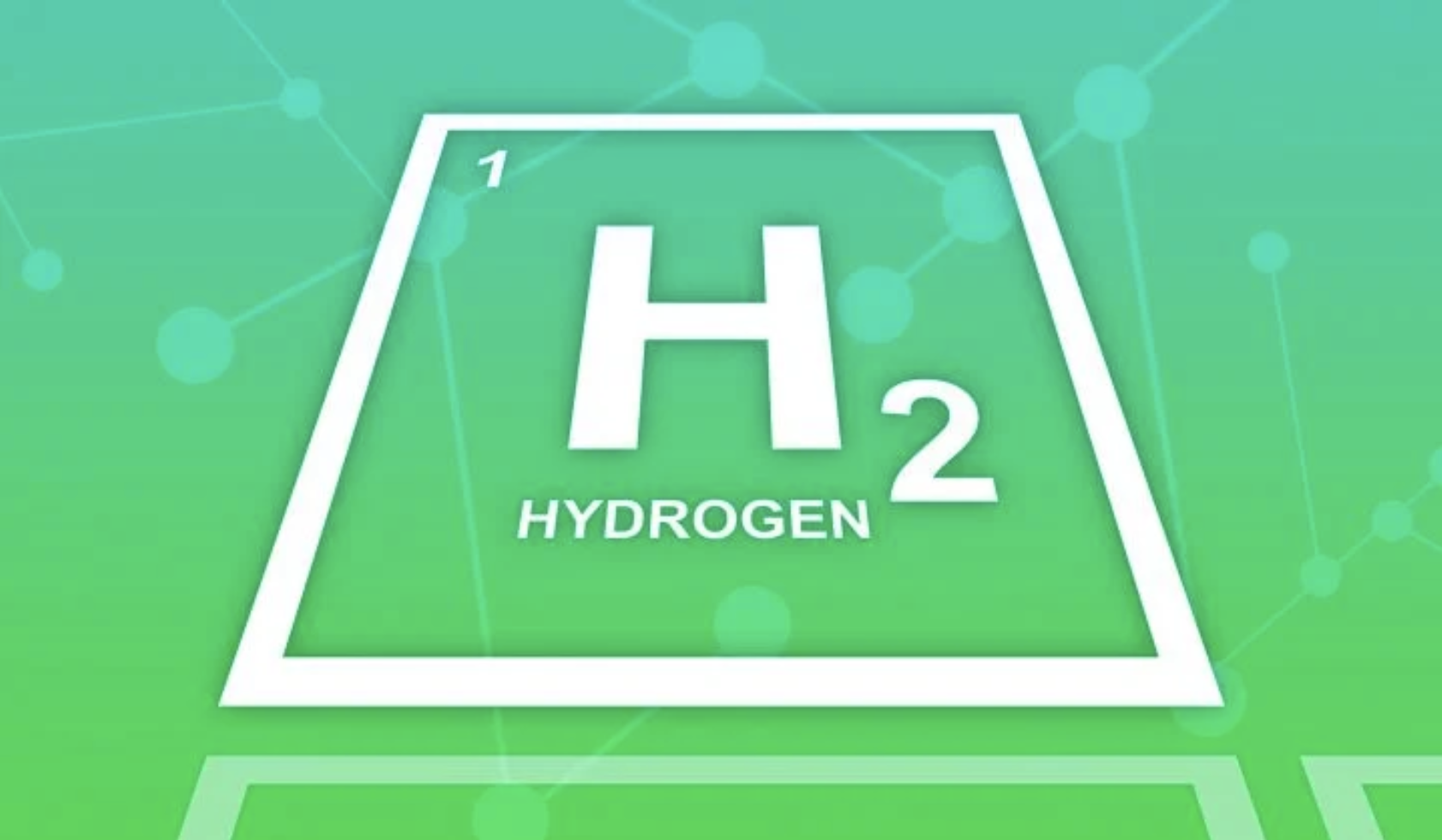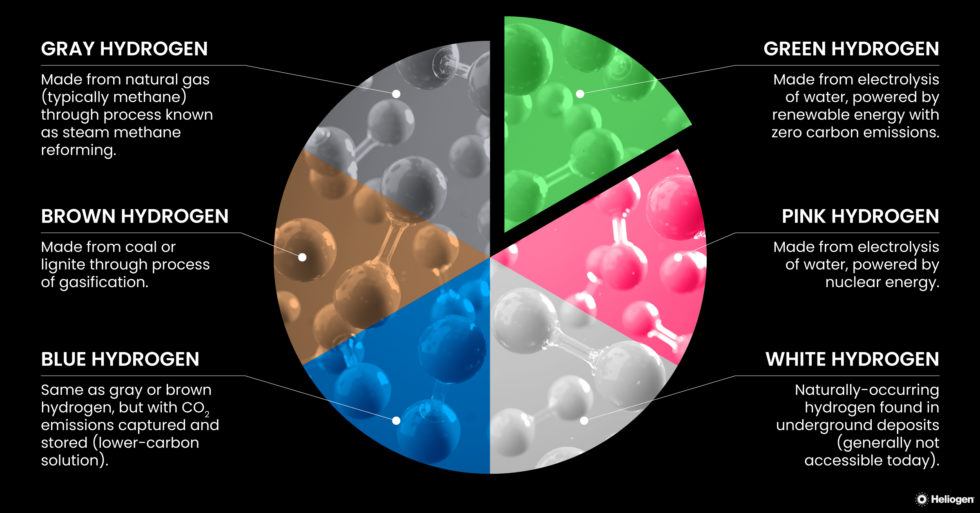All About Hydrogen
21 Mar. 2022

Credit: Green Tech Media
With one proton, one electron, and no neutrons, hydrogen is the simplest element in the universe yet has enormous potential in becoming an important fuel source for a clean energy future. Even more interesting is that there isn’t just one form of hydrogen that can accomplish this but several. Since hydrogen never exists on its own, different methods can be used to separate it from the elements it is attached to. For example, hydrogen produced from nuclear energy is pink hydrogen while yellow hydrogen is made through the electrolysis of water using solar power. While both produce hydrogen, blue hydrogen and green hydrogen have been the most discussed among gas companies, the news, and climate supporters.
Blue hydrogen is much like gray hydrogen in that it is produced from the “steam reforming” of the methane in natural gas. But unlike gray hydrogen, the byproduct of this process, carbon dioxide, is captured and stored rather than released into the air. In this way, the carbon footprint of blue hydrogen production should be much less than that of gray hydrogen. However, Robert Howarth, the David R. Atkinson Professor of Ecology and Environmental Biology in the College of Agriculture and Life Sciences points out that the carbon footprint for blue hydrogen can only remain small as long as there are enough places that can serve as storage spaces and there are no leaks from the storage sites. Moreover, he states that “the industry promotes blue hydrogen as a solution, an approach that still uses methane from natural gas, while attempting to capture the byproduct carbon dioxide. Unfortunately, emissions remain very large.” In other words, blue hydrogen is most likely not the solution to help reduce global warming.

Credit: Heliogen
Green hydrogen, on the other hand, shows promise in playing a prominent role in providing clean, green energy. Using renewable sources like hydroelectric, solar, and wind power to generate electricity, green hydrogen is produced through electrolysis, a process that splits water into two hydrogen atoms and one oxygen atom. This entirely different method of producing hydrogen involves minimal carbon emissions and no harmful gas byproducts. Energy is renewable and sustainable, so the need for fossil fuels (like those needed for the production of blue and gray hydrogen) is eliminated. According to Howarth, “the best hydrogen, the green hydrogen derived from electrolysis – if used wisely and efficiently – can be the path to a sustainable future.”
Although not much green hydrogen is currently being produced, Wood Mackenzie, a global research and consulting company that powers the natural resources industry, “forecasts output booming in the coming years.” As more and more companies like Shell Nederland and Lighthouse BP begin to reassess their infrastructure and invest in green hydrogen technologies, emissions from industries such as steelmaking, refining, chemical production, and fertilizer production will dramatically decrease. This is significant since the industrial sector accounts for more than one-third of the world’s energy consumption and over 20% of US carbon emissions. Long-distance trucks and trains would benefit as well, as hydrogen-powered fuel cells would operate with higher efficiencies. The plethora of benefits that green hydrogen can provide the world seems endless. Once it becomes affordable, a clean, green future will definitely be within our reach.
References
https://www.weforum.org/agenda/2021/07/clean-energy-green-hydrogen/
https://www.jdpower.com/cars/shopping-guides/whats-the-difference-between-gray-blue-and-green-hydrogen
https://news.cornell.edu/stories/2021/08/touted-clean-blue-hydrogen-may-be-worse-gas-or-coal
https://www.greentechmedia.com/articles/read/green-hydrogen-explained
https://heliogen.com/green-hydrogen-the-fuel-of-the-future/
